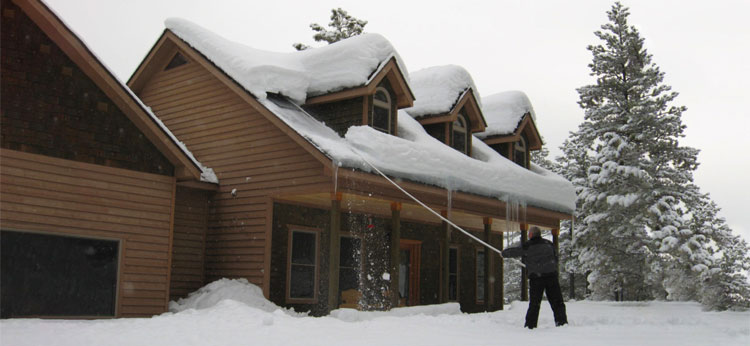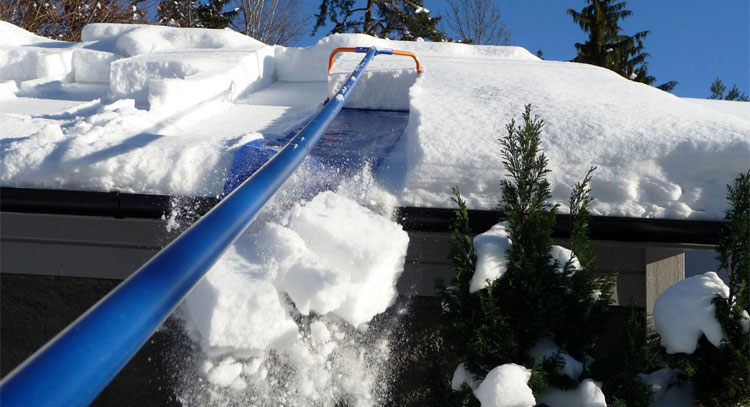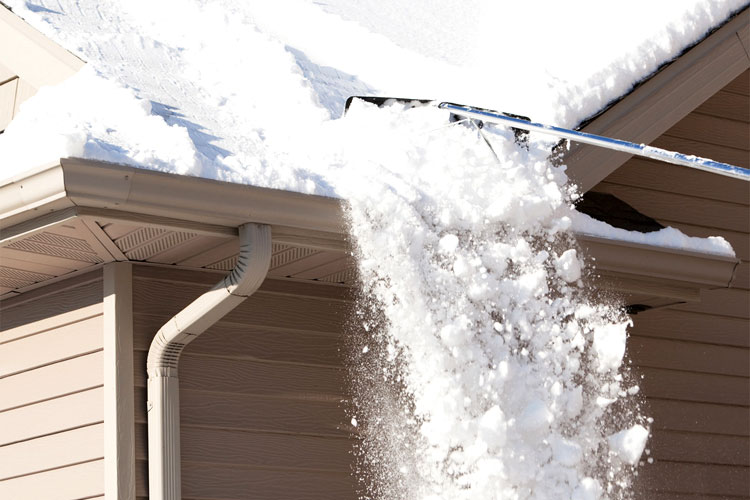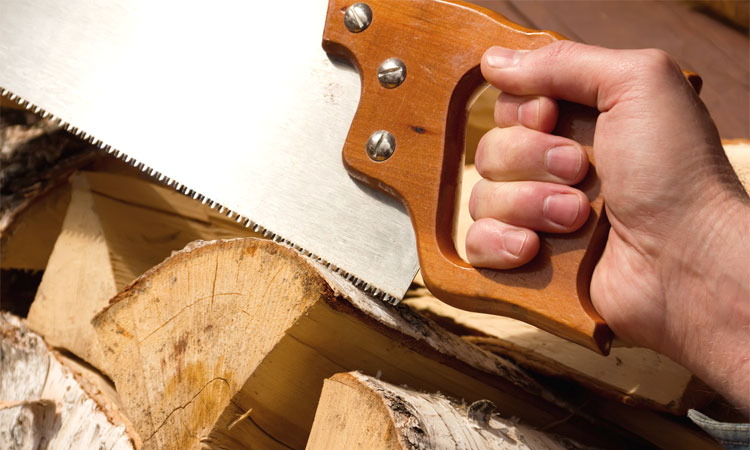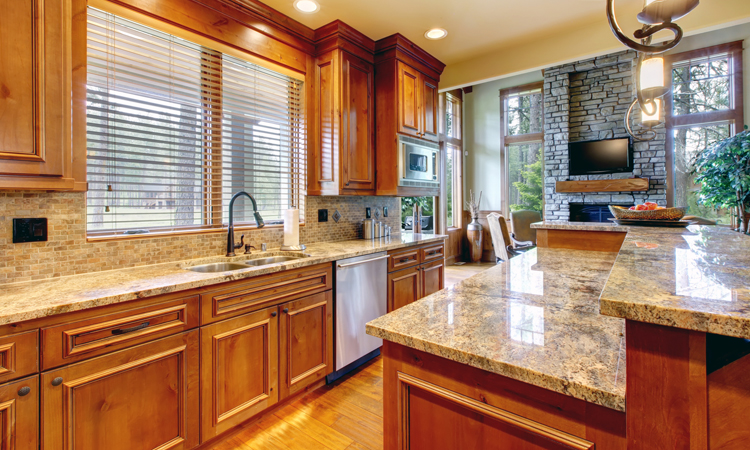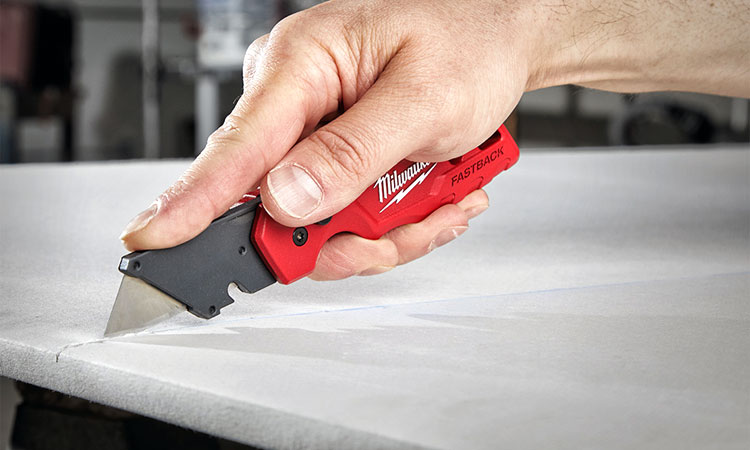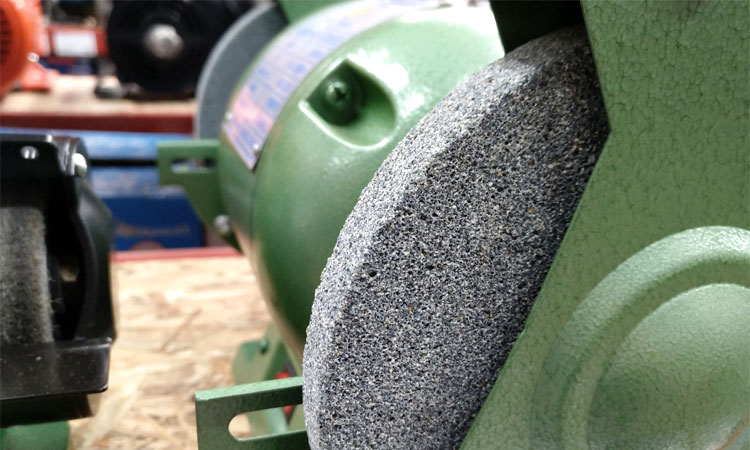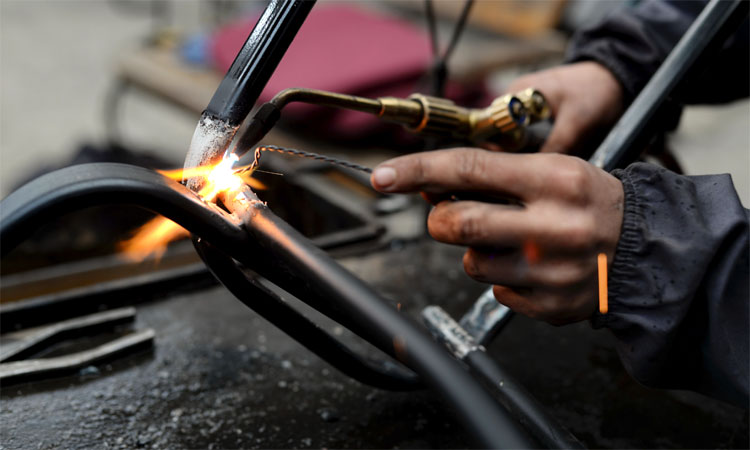8 Best Roof Rakes for Snow Removal
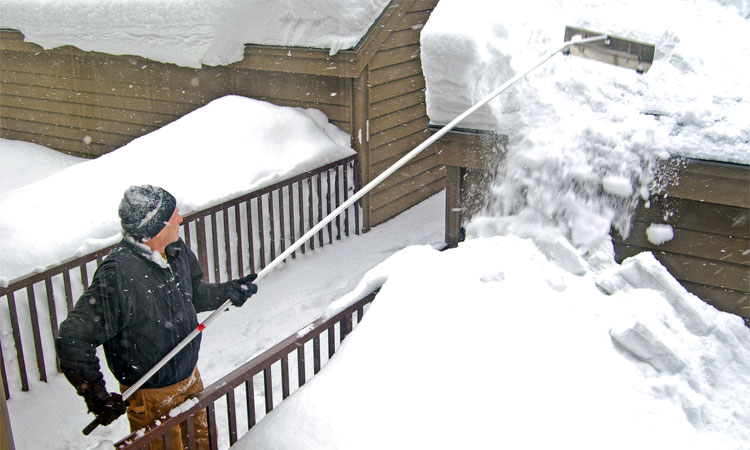
“Winter is coming!” isn’t just a saying, it’s the plea your roof utters every autumn as the threat of heavy snows and ice dams approach. Thankfully, owning a roof rake can put your roof’s mind at ease, with the promise of fewer ice dams and less weight pushing down on the roof’s frame.
Here are eight of the best roof rakes currently available so you (and your roof) can sleep easier when it snows.
Our 8 Favorite Roof Rakes for Snow
| Product | Reach | Blade Width | Weight | Made In | |
|---|---|---|---|---|---|
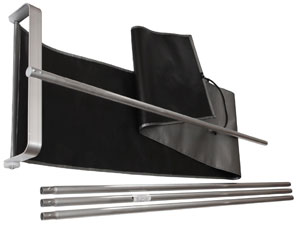 | MinnSnowta Roof Razor Dynamo | 24 ft. | 24" | 10 lbs. | USA |
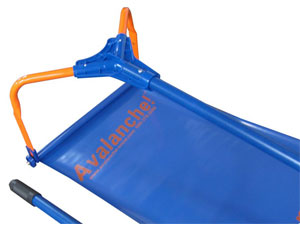 | Avalanche! Original 500 | 16 ft. | 17" | 9 lbs. | USA |
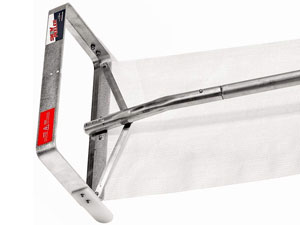 | SnowPeeler Premium | 30 ft. | 18" | 13 lbs. | Canada |
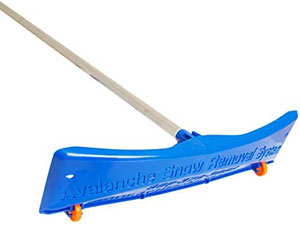 | Avalanche! Snow Rake Deluxe 20 | 20 ft. | 24" | 6 lbs. | USA |
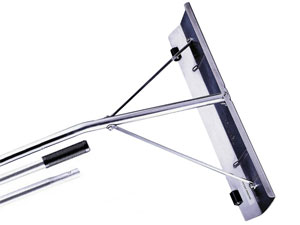 | Garelick 89421 | 21 ft. | 24" | 6 lbs. | USA |
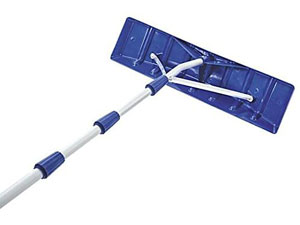 | Snow Joe RJ204M | 21 ft. | 25" | 5 lbs. | China |
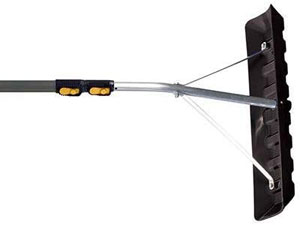 | True Temper 193055510 | 17 ft. | 24" | 3 lbs. | Canada |
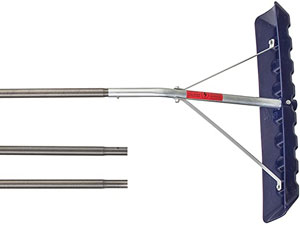 | Garant GPRR24 Yukon | 16 ft. | 24" | 4 lbs. | Canada |
Roof Rake Reviews
#1 – MinnSnowta Roof Razor Dynamo Roof Rake

The main pole is made of aircraft grade tempered aluminum, measuring 24 feet long and 1-3/8 inches in diameter. This alone makes it stronger and longer than most of the competition.
To add even more functionality, this slicer-blade is two feet wide for faster snow removal and the 12-foot long slide makes snow removal faster and easier than snow rakes without one.
The pole length alone is an excellent selling point, but one of the tool’s real strengths is its customizability. Industrious owners have fashioned blades for the tool, as well as adding brackets lower on the handle to split the snow as it slides down the tarp sheet.
The size of this tool can make it a little heavy for some people and isn’t well suited for older folk who still like to live a DIY lifestyle. It also doesn’t perform as well against packed snow. Also, the design means it’s best-suited for higher pitched roofs.
>> Check current price <<
#2 – Avalanche! Original 500 Snow Roof Rake

Also made in the USA, the Original 500 has a fairly short (yet easy to handle) 16-foot length, but makes up for this with a 17-inch wide blade and mere 9 pound base weight. 1.5-inch wheels protect asphalt roof shingles, while the Original 750 has 3-inch wheels for metal, cedar, and other taller roof materials.
There’s not much to say about this tool that isn’t immediately obvious. The wide edge allows for faster, more efficient snow removal without requiring a cutting blade.
The overall design is practically an industry standard at this point, and it will last a long time when handled properly.
As with most slicer-blade models, the Original 500 isn’t meant to be used with dense or packed snow and will break if you attempt to use it for ice dam removal.
Additionally, the lighter weight won’t make this easier to use for people with poor upper body strength. As with all roof rakes, be mindful of extension limits, as going beyond this tolerance can and will cause the pole to bend or break.
>> Check current price <<
#3 – SnowPeeler Premium Roof Rake

The SnowPeeler is made in Canada so you can be sure the manufacturer knows a thing or two about snow.
A commercial-grade aluminum blade, reinforced with brackets, is tough enough to handle heavier snows that most other slicer-blade rakes. It also comes with two different tarp slides to make it easier to work on single and double story roofs.
This tool is good quality overall, but the length of its two-inch diameter poles may be of concern to some prospective users. Thankfully, the poles are quite sturdy when used properly, and customer service is excellent if you have questions or run into problems along the way.
Perhaps the biggest concern with the SnowPeeler Premium is the lack of wheels. It uses glider pads instead, which may or may not be sufficient for the concerns of many homeowners. This tool is also very top-heavy, requiring more effort than some of the other tools on this list.
>> Check current price <<
#4 – Avalanche! Snow Rake Deluxe 20

The length of the Snow Rake Deluxe 20 is only 20 feet, but it has the same 1.5-inch wheels as the 500 and all the parts simply snap together so you can get to removing snow as quick as possible. Best of all, it weighs a mere six pounds, making it one of the lightest rakes in its class.
Made in the USA to the same standards as the more expensive 500, this is a great alternative for people with a lower, wider roof. The quality means it will last for many years, and the light weight means it will help your back last just as long.
>> Check current price <<
#5 – Garelick 89421 Aluminum Snow Roof Rake

This is a pretty sturdy roof rake that’s both easy to assemble and use. The maximum safe tolerance is 21 feet, so it works best on single floor structures. The rollers do an excellent job of climbing the lower edge of shingles, acting more like treads than wide wheels.
The most common complaint about this tool is its wheels which have been noted to fall off according to more than one user. The good news is they can be seated again with little effort, and this appears to be an actual design feature, rather than a manufacturing flaw.
>> Check current price <<
#6 – Snow Joe RJ204M Telescoping Snow Roof Rake

This scoop-style roof rake telescopes from 6 to 21 feet using twist-n-lock extensions. It weighs in at a mere 5 pounds, making it one of the lightest on this list and one of the easiest to use.
The poly blade head is 25 inches wide and 6 inches tall, allowing for large-scale snow removal in a short amount of time.
There is a degree of controversy over this product, with some consumers swearing by it and some swearing at it. The lighter weight means it’s much easier to use, but also easier to abuse, which may be why some consumers have complained it breaks easily while others say it’s very sturdy.
It also appears that customer service provides support for manufacturing defects but does not carry a no-questions replacement policy. As a result, this roof rake is best purchased if you have prior experience with this type of tool but are unable to wield one of the heavier models anymore.
>> Check current price <<
#7 – True Temper 193055510 Telescoping Roof Rake

Despite being partly plastic, this tool is surprisingly sturdy. The handle shape makes it easy to grip, and it does its job quite well.
Be warned, many consumers have received resealed packages with parts missing, and the manufacturer has had a lot of calls regarding this. It’s unknown whether this was a batch error or something happened at the warehouse, so please use caution if purchasing this product for the ‘20-’21 winter season.
>> Check current price <<
#8 – Garant GPRR24 Yukon Roof Rake

The nuts and bolts included for assembly have poor threading making assembly not exactly frustration-free. You’ll also need a 7/16″ wrench or socket on-hand to tighten them.
You may also need to scrape a bit of paint from the male connecting points if the extensions refuse to fit. Overall, it’s a good, reliable tool that does its job well (once assembled).
>> Check current price <<
Roof Rakes 101: A Buyer’s Guide
The damage caused by ice dams and heavy snow can result in expensive repairs or even roof replacement well before the roof’s life expectancy is up. Thankfully, roof rakes are an effective tool in protecting both your roof and your family.
Read on to learn more about what they are, what they do, and what to look for when purchasing one.
See Also: Best Garage Heaters to Stay Warm in Winter
What is a Roof Rake?
A roof rake (not to be confused with a roof’s rake) is a pole-mounted piece of roof snow removal equipment designed to remove excess snow from your roof. It’s like a snow shovel for your roof.
Snow buildup can become a safety issue, falling on people passing beneath the roof’s edge or overwhelming gutters. If left alone, the snow can even form ice dams or damage your shingles.
Some roof rakes, known as scoop rakes, pull the snow downwards, allowing it to fall into gutters or to the ground below. Others, called slicer-blades, are designed to push upwards, usually sending the snow down an attached tarpaulin “sheet” so it won’t land on you or your plants.
Note that roof rakes work best on shingle roofs, but can also be effective on a metal roof. Ceramic tile roofs are designed to channel snow and water, and are thus incompatible with the broad shape of a roof rake.
A relative of roof rakes, the roof broom is designed to tackle more fragile roof surfaces, such as solar panels.
See Also: 5 Tips to Winter-Proof Your Garage
When Should You Roof Rake?
As with most maintenance and prevention tasks, waiting until it’s “necessary” is a bad idea. Roof raking should be done as soon as the snow reaches six inches, if not sooner to prevent the formation of ice dams, which can breach shingles and allow water to damage the subsurfaces of your roof.
Ice dams are caused partially by the sheer pressure of snow, which weighs close to 50 pounds per square foot.
Scoop rakes work best for lighter snows but can easily get stuck if an ice dam forms. Meanwhile slicer-blades can remove snow from above an ice dam, preventing it from getting any bigger, but won’t remove snow as far down as a scoop, so they tend to be better-suited for heavier snows.
Do Roof Rakes Damage Shingles?
Running any type of tool against the angle of shingles can cause damage, but roof rakes are generally safe when used properly.
Scoop rakes are designed solely for removal on a pull stroke and should always be lifted away from the roof when raising the tool towards the roof peak. Pushing the rake while it’s in contact with the shingles will cause it to bend or chip the edges. As a result, scoop rakes require a bit more skill and upper body strength to use.
Meanwhile, slicer rakes have small wheels that allow the tool to glide upwards along the shingles without causing any damage. These are generally easier to use, but the trade-off is that they’re less effective on impacted snow and won’t remove as much as a scoop rake.
What About Damage to a Metal Roof?
Slicer-blade rakes are generally the best choice for metal roofs, which have a protective coating that can be scraped off with a scoop rake’s blade.
You will also need one with tall enough wheels to clear the raised seams. The Avalanche! 750 and its 3-inch wheels is arguably the best roof rake for metal roofs.
What Type of Roof Rake is Best for Heavy Snow?
As mentioned, slicer-blades are better-suited for heavy snowfall. They have a higher clearance but also cut underneath the snow, allowing it to slide down the tarp in sheets, whereas a scoop just pulls all of the snow down onto the gutters.
How to Use a Roof Rake
The first thing you will need to be aware of is how many extensions you’ll need. As you have to stand away from the house to use this tool, geometry invariably comes into play. But in simple terms, you will usually have to stand about six feet back to deal with a single floor roof, 18 feet back for a two-floor roof. This distance will change if you are standing on a slope.
To reach halfway up a single floor roof, you’ll generally need 21 feet of length, adding two or more five foot extensions as you go higher up. These extensions should be added as you go to make scaling the walls easier.
Be warned that adding too many extensions can cause the rake to bend or break, so use caution if adding more extensions than the design specifications allow.
Begin towards the edge of the roof and slowly make your way towards the peak, removing the excess snow and avoiding too much pressure. A well-raked roof will still have a very thin layer of snow protecting the shingles and may leave some snow untouched near the peak.
This snow will thin out from the wind on its own with plenty of sliding space before it hits the gutter. You can then go back a day or two later and remove more if it had been a particularly heavy snow.
Related: How to Thaw Underground Pipes
What to Look For in a Roof Rake
As you can see, roof rakes are fairly straightforward but can require a little practice and (sometimes) a lot of muscle, especially on taller roofs. As a result, there are a few features to keep an eye out for when purchasing a rake.
- Tolerance – Go with a roof rake that can handle as many extensions as you might need. If you don’t need many extensions, a lower tolerance is fine, but a tall roof will require a more sturdy design.
- Wheels – Slicers should always have wheels to keep them away from the shingle. These are often fairly small, but make sure they’re present.
- A Good Sheet – Most slicers also come with a sheet, usually made of tarp, that the snow slides down. This is a must-have in most cases, but can be damaged if used in high winds or other adverse conditions that could rip or puncture the sheet’s surface.
- Combinations – Some models come with an interchangeable head, giving you both a scoop and slicer. These are great because you can slice the bulk of the snow, going back over it with the scoop. Conversely, you can use the scoop to break through the uppermost crust if it’s hardened, allowing you to go back and remove the bulk with the slicer head.

